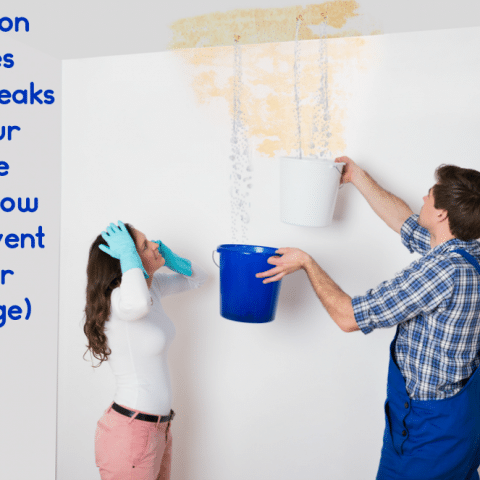Guide To Water Leakage Detection At Home
Guide To Water Leakage Detection At Home
Blog Article
How do you feel when it comes to Finding hidden leaks?

The minute you find a leakage, calling your plumber for fixings is the most effective service. Some little water leakages might not be noticeable. If you can not spot it with your naked eyes, below are some hacks that aid.
Early discovery of leaking water lines can alleviate a prospective disaster. Apart from conserving you cash, it will decrease the worry and also frustration.
Examine Water Usage
Evaluate your water costs and track your water consumption. As the one paying it, you should see if there are any kind of inconsistencies. If you detect sudden changes, in spite of your intake coinciding, it implies that you have leakages in your plumbing system. Remember, your water expense need to fall under the exact same range each month. An abrupt spike in your expense shows a fast-moving leakage.
A consistent rise every month, even with the same routines, reveals you have a slow leak that's additionally gradually escalating. Call a plumber to thoroughly check your building, especially if you feel a cozy area on your floor with piping below.
Analyze the circumstance as well as evaluate
Home owners should make it a practice to check under the sink counters as well as also inside cabinets for any type of bad odor or mold development. These 2 red flags suggest a leakage so timely focus is called for. Doing regular examinations, also bi-annually, can save you from a major trouble.
Examine the Water Meter
Every house has a water meter. Checking it is a surefire way that helps you discover leaks. For starters, turn off all the water sources. Ensure no person will certainly purge, use the tap, shower, run the cleaning maker or dish washer. From there, most likely to the meter and also watch if it will change. Since no one is using it, there ought to be no movements. If it moves, that suggests a fast-moving leak. Also, if you detect no changes, wait an hour or more as well as inspect back once again. This indicates you may have a slow-moving leak that can even be underground.
Asses Outside Lines
Don't neglect to inspect your outside water lines as well. Ought to water seep out of the connection, you have a loose rubber gasket. One tiny leak can waste loads of water and spike your water bill.
Do a Food Coloring Examination
When it comes to water consumption, 30% comes from toilets. Examination to see if they are running properly. Drop specks of food shade in the tank as well as wait 10 mins. There's a leakage between the storage tank and also dish if the color in some way infiltrates your bowl throughout that time without flushing.
Examine for discolorations and also damaging as many devices and pipes have a life expectancy. If you suspect leaking water lines in your plumbing system, don't wait for it to intensify.
The minute you locate a leakage, calling your plumber for repair work is the ideal remedy. Some tiny water leakages may not be noticeable. Inspecting it is a guaranteed means that helps you uncover leakages. One small leakage can lose loads of water and also increase your water costs.
If you suspect dripping water lines in your plumbing system, do not wait for it to escalate.
How to Know If Your Home Has a Hidden Leak
Water Meter Reveals Inexplicable Water Usage
If you’d like to test whether or not there’s a leak somewhere in your home, you can do this using your water meter. Here is how to conduct the test:
Don’t use any water in your home for at least 30 minutes; this also means not turning on faucets or water-using appliances.
Go outside, and check your water meter for activity.
If your water meter shows that there was activity, even though no one was using any water, this proves that there is a leak in your home.Visible Mold or Mildew Growth
Leaks behind walls create moist, dark environments that allow mold and mildew to grow and thrive. Eventually, you might see mold growth forming on the wall closest to a hidden leak.
If mold is growing in an area that receives a high amount of moisture, such as a bathroom, it may simply be an indication that better ventilation is needed. However, if you see mold growth on a wall or the ceiling in an area where you would not expect, you probably have a hidden leak.
Musty, Mildew Odor
Sometimes you might not be able to see the mold or mildew that is growing as a result of a leak. However, the smell can give the problem away just as easily. If you catch a whiff of something musty, there’s a good chance that old water is collecting somewhere in your home that you can’t see.
Stained/Warped Walls, Ceilings, or Floors
When your home soaks up water, a variety of red flags can become visible, including ceiling stains, bubbling drywall, warped walls, and sagging floors. While these issues can be caused by excess humidity, they can also be signs that a pipe or plumbing connection has started leaking behind your walls.
Inexplicably High Water Bill
After a while, you get a general sense for what your water bill should be. If you own a pool or sprinkler system, your bill will tend to be higher during summer. However, if you receive a water bill that seems especially high, and you can’t figure out what caused it, then you may have a hidden leak somewhere that’s increasing your bill.
https://www.plumbingjoint.com/blog/2019/july/how-to-know-if-your-home-has-a-hidden-leak/

I found that review about Detecting hidden plumbing leaks when perusing the search engines. Sharing is nice. Helping others is fun. Thank-you for going through it.
Report this page